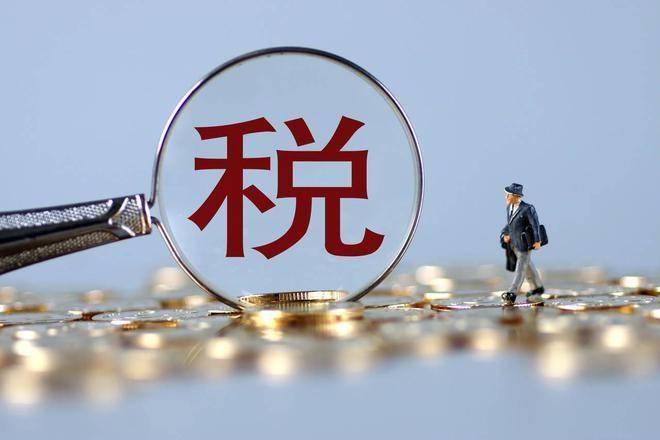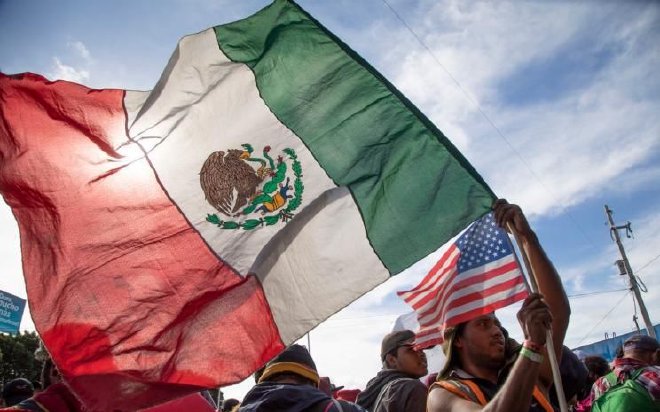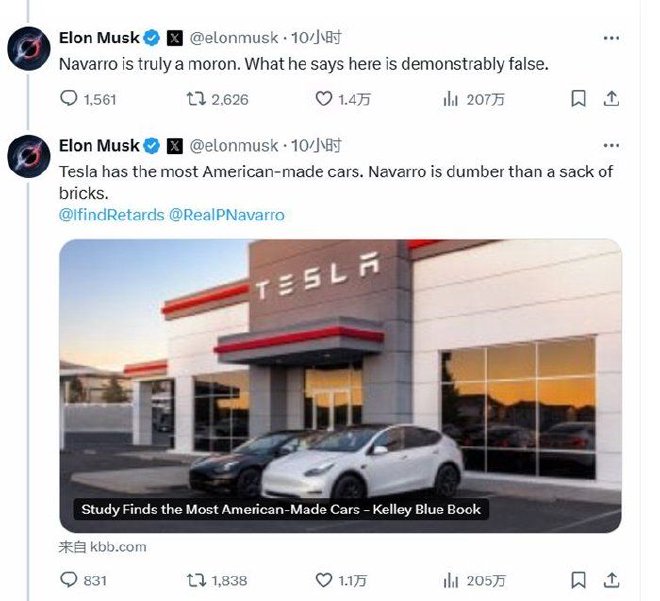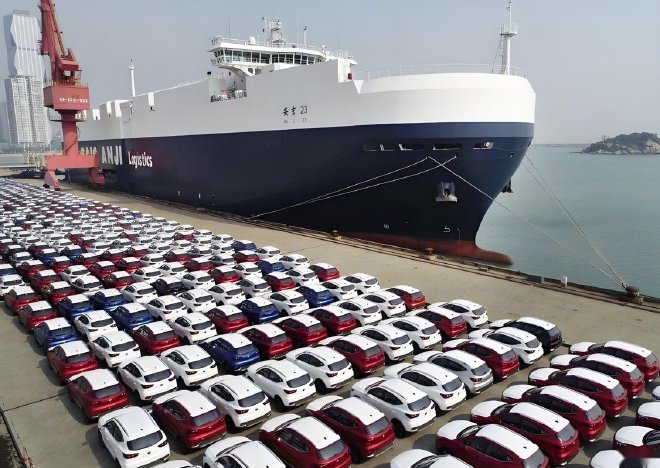If we compare the global tariff war initiated by the U.S. to a “fireworks show,” its “brilliance” is unprecedented. All industries related to foreign trade, along with every business and individual in the value chain, face the toughest international trade outlook since World War II. The global trade system has already become rigid by the end of Trump’s first term. Now, we may witness the official end of this “vegetative state.” Two predictions about the tariff war’s trajectory Some believe that severe damage to the U.S. economy, combined with domestic opposition and retaliation from trade partners, could force Trump to backtrack. This prediction may be overly optimistic. First question: Will the global tariff chaos last long? Trump inherited a mess. With a $36 trillion national debt, over $1 trillion in annual interest, and a $2 trillion funding gap to maintain social operations, he has only two solutions: borrowing and taxation. It’s clear that the U.S. struggles to pay even the interest. The debt is unsustainable. Raising taxes domestically is impractical, and debt restructuring is impossible. Multinational corporations hide profits overseas through transfer pricing, which never returns to the U.S. However, while profits can stay abroad, goods will cross borders. Therefore, Trump decided to impose taxes directly on transactions to combat offshore structural tax avoidance. If Trump aims to address America’s long-term issues, global tariff increases are the only solution. There is nothing left to discuss between the U.S. and China. This isn’t due to Trump’s poor political credibility; rather, negotiations require a premise: a compromise that offers a way forward. Currently, the U.S. has left no room for compromise with China. Both sides no longer need low-level technical consultations. The tariff war will likely last long, but its intensity may not always rise. Whether tariffs are 54% or 104%, they effectively ban trade. At this level, the specific numbers become irrelevant.
During Trump’s current term, the world faces a new reality. The midterm elections may bring small changes, but only if the Republican Party loses both chambers. The second issue is whether other countries will compromise with the U.S. and isolate China. The answer is no. Other countries cannot produce the results Trump desires. On April 7, the European Commission proposed tariff exemptions on cars and other industrial goods. Trump responded, “It’s not enough.” Vietnam was the first to compromise, suggesting zero tariffs. The U.S. dismissed this. White House trade advisor Navarro stated, “It means nothing to us. What matters is non-tariff fraud. Zero tariffs won’t reduce our $123 billion deficit.” Assuming Trump reaches agreements with all other countries, the increase would be smaller, but negotiations with China would remain stalled. This approach reflects his first term. Exporters are not foolish. They will not pay heavy taxes willingly. They will take alternative routes, including rebranding, assembly, and light processing. Only as a last resort will they manufacture on-site. However, both Vietnam and Mexico can only handle limited end manufacturing. The upstream still relies on China. China pays intermediaries a few or several percentage points in profits. The expected industrial transfer has not occurred; it has only increased friction costs. This is why Trump seeks uncompromising agreements with other countries. Chinese companies will face challenges. Tariffs will become long-term and widespread. This will deeply impact the global automotive value chain. Some say the impact on China’s auto industry is minimal. They argue that it affects U.S. manufacturers more, as direct trade in complete vehicles between China and the U.S. is limited. In 2024, China will export $4.8 billion in complete vehicles to the U.S., which is 4% of China’s total vehicle exports. China will also export $27.6 billion in auto parts to the U.S. It’s important to note that some basic materials, like graphite and metals, often don’t count as “auto parts.” Therefore, the actual value of exported parts is likely higher. By the end of February 2025, Chinese automakers will have a total production capacity of about 580,000 vehicles per year in Mexico. This includes companies like Chery, BYD, and JAC, along with major suppliers like CATL and Guoxuan High-Tech. About 70% of this production targets the U.S. market. The U.S. maintains strict import policies for Chinese-branded vehicles. They claim to have measures for origin tracing and certification. However, this does not explain the recent surge in Chinese investment in the Mexican market. In 2024, Mexico will supply nearly 3 million vehicles to the U.S., mostly produced by American, Japanese, and German manufacturers. The number or value of Chinese parts in these products can be considered as made in China, not Mexico. The actual operations of U.S. Customs are quite ambiguous.
Customs cannot only rely on declaration forms. The Customs and Border Protection (CBP) agency inspects goods and verifies origin information. It now uses AI to classify goods and refine origin determination standards. The CBP budget indicates a focus on combating fentanyl and illegal immigration, not on strengthening collection capabilities. Without enforcement power, customs either tolerates widespread delays or allows products that appear to be from Mexico. Due to geographic barriers and cross-border transport costs, Chinese companies will not place production for the Southern Common Market in Mexico. Brazil and Argentina are more suitable locations. After ruling out other possibilities, the reality remains: hundreds of thousands of Chinese-made cars enter the U.S. market legally each year. Companies create a shell filled with Chinese parts. They address maintenance needs while avoiding expensive component purchases. It is clear which option benefits management more. Therefore, the Mexican government seeks compromise while Canada confronts the current U.S. administration. Political figures may speak boldly, but the lack of enforcement at customs may allow this understanding to last. However, enforcement will eventually catch up. By early next year, this “white skin, red heart” strategy may face challenges. The supply chain struggles before disintegration. The previous Democratic administration imposed a 27.5% tariff on Chinese vehicles and a 102.5% tariff on electric vehicles. However, it exempted highly dependent components from these tariffs. Musk, about to leave DOGE, understands the importance of production costs. For the same Model 3, it is crucial to know where production costs are lowest, efficiency is highest, and yield is best. It would be strange if he did not connect Texas and Berlin’s production capacity with China’s parts supply. In fact, Tesla’s cost advantage in the U.S. relies on the Chinese supply chain. The company heavily depends on lithium batteries, cast parts, interiors, and smart driving modules from China. Meanwhile, Tesla focuses on investing in and retaining software IP like FSD. Unlike other automakers that conceal their import practices, some media report that Tesla uses a straightforward “direct delivery, direct customs declaration” model. The Biden administration ignores this. Their strained relationship does not affect their cooperation. This approach to bypass middlemen looks good. However, with the current tariff war, Tesla may face tariffs alone if it cannot secure exemptions. Whether the tariff is 54% or 104%, it exceeds what Chinese suppliers can bear. This time, they will not share the costs with Tesla. Theoretically, Musk could pass the added costs to consumers, but that may not be wise. Tesla faces unprecedented brand management challenges in the U.S., closely tied to Musk’s political activities. Tesla could follow its peers and use Mexico as a stepping stone, but this requires significant investment. The company halted the Mexico project two to three years ago, which raises questions about timing. Even when the Mexico project launched, uncertainty in the Sinbaum government’s business policies and USMCA affected Chinese suppliers’ willingness to invest. In the face of these challenges, Musk can only express his anger. He called trade war advisor Navarro “dumber than a bag of bricks.” He claims that four Tesla models have the highest American-made content.
Not just Tesla, all American automakers must reassess the value chain related to Chinese suppliers. They need to consider restructuring in raw material procurement, vehicle manufacturing, and technical cooperation. Soon, American manufacturers will have to remove China from the new energy supply chain. This chain is the most innovative and largest in scale globally, with exclusive advantages. Many materials can only be produced in China or have significant price advantages there. Americans still do not know where to find alternatives. The U.S. aims to establish a sufficient supply of battery metal precursors, rare earth elements, and graphite. This process will take 10 to 15 years, and by then, opportunities may be lost. Under the endless tariff war, the global supply chain shifts from efficiency to security. “Security” means accepting higher costs. Full localization of supply means a significant drop in profits for manufacturers and suppliers. In fact, the supply chain system between the old and new continents is on the brink of collapse, but before it fully disintegrates, it may face years of struggle. This situation is a double blow to multinational production methods. The CEOs of BBA likely want to express their frustration the most. In 2024, China will import 65,000 Mercedes from the U.S. The GLE and GLS series are the main models. The latter has a price range of 1.06 million to 1.788 million yuan. The profit from one GLS exceeds that of ten C-Class cars. Interestingly, most of China’s imported Mercedes come from the U.S., while most high-end models in the U.S. come from Europe. Whether from Europe or the U.S., high-end car parts mainly come from Europe. If we trace down to sub-materials, some come from China. Mercedes, BMW, and Lexus share a common trait. They accurately understand the needs of high-end car consumers in China and the U.S. Beyond product strength and brand power, the origin of the car adds emotional and social value. This aligns with the values of this consumer class. After tariffs increase, buying a G-Class in the U.S. will raise the tariff cost from $3,200 to $32,000. In China, the cost for a GLS will also rise significantly. This does not account for tariffs on European parts imported for U.S. production. If manufacturers pass on these costs, the tariff on a GLS in China could reach an astonishing 144%. In 2024, China will import 19,500 BMWs from the U.S. Mercedes and BMW will account for 60% of all “American cars” imported into China. The tariff war has a potential dual destructive effect. It disrupts global production capacity for multinational car companies and dismantles the global supply chain focused on efficiency. It forces these companies to localize, reconfiguring production and supply chains. Besides U.S. demand, Asian production must distance itself from the tariff burden. The easiest path is to return to Europe. Initially, BMW had to localize the X5, but it turned out to be beneficial. Lexus’s wholly-owned project in Shanghai also appears forward-thinking, despite their unexpected challenges. Regarding the severing of U.S.-China supply chains, the Biden administration has maximized this strategy. Alternatives are hard to find, and they must let some things go. Current tariff rates are severe, but the world is tangible. If something is missing, it’s simply absent. U.S. customers will find their own solutions.
The U.S. clearly sees that China’s efforts in recent years have reduced exports to about 15% of the total. Importers will find solutions. The over $500 billion will not vanish; it will continue in some form, but friction costs will rise. If overall costs exceed the supplier’s break-even point, transactions will fail. Under this premise, global car manufacturers must find and can find new production and sales methods. It won’t be more comfortable than before.



